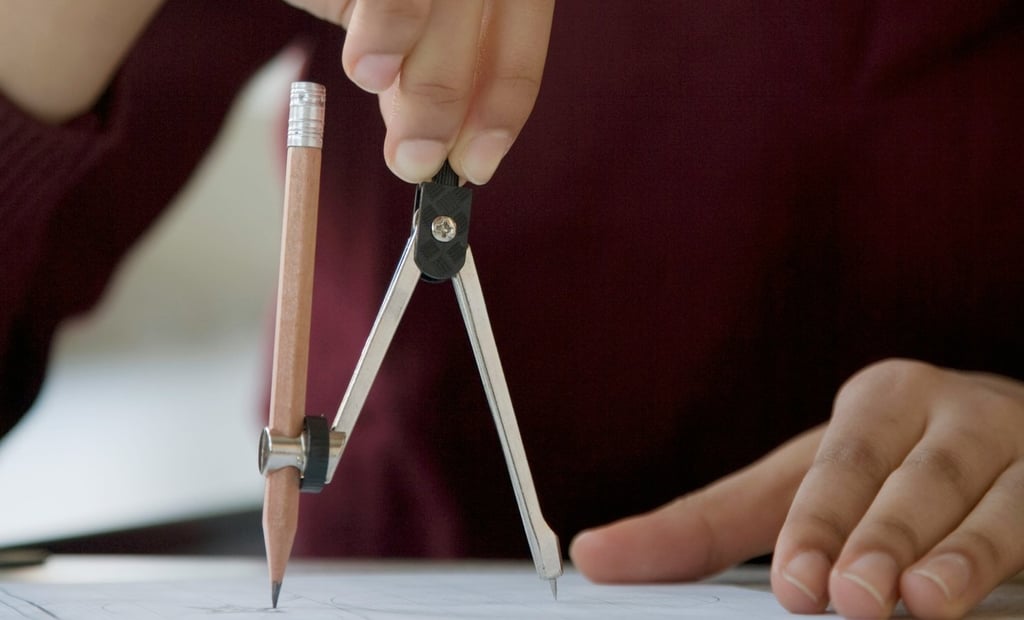12 Exam-Taking Strategies Every Cambridge Student Needs to Know
Struggling with exams? Discover 12 proven exam-taking strategies to stay calm, manage time, avoid mistakes, and score higher in IGCSE and A-Level Exams
STUDENTS
AchieverTandoh
10/17/202510 min read


12 Exam-Taking Tips Every Student Needs to Know
You’ve spent weeks (maybe even months) revising for your Cambridge exams. You’ve memorized formulas, solved past papers, and highlighted every possible “important section” in your textbook. But when the exam paper finally lands on your desk, your mind goes blank. Suddenly, the hours of preparation don’t seem to matter much, you’re staring at the first page, panicking, and unsure if you’re prepared enough.
Sound familiar?
Here’s the thing, most students don’t underperform in Cambridge exams because they didn’t study enough. They underperform because they don’t know how to take the exam.
There’s a big difference between knowing the material and showing what you know under pressure. Exams are not just tests of knowledge; they’re tests of performance, time management, focus, and strategy. The Cambridge system, especially with subjects like Maths, Physics, or Economics, is designed to assess not only what you’ve learned, but how effectively you can apply it when it counts.
That’s why this guide exists. If you’re preparing for IGCSE, AS, or A-Level exams, you need more than revision notes. You need exam technique, the skill of answering questions, managing time, and collecting every mark you possibly can.
In this post, I’ll break down 12 proven exam-taking strategies every Cambridge student should master. These aren’t abstract tips—they’re practical, tested methods you can apply the very next time you sit down for an exam. Whether you’re aiming to secure a pass or push yourself into the top-grade boundaries, these strategies will give you the techniques you need in the exam room.
Let’s dive in.
1. Calm Your Nerves Before You Start


The first few minutes of any exam are the most important. Your heart might be racing, and your brain feels foggy. Many students waste the first 5–10 minutes panicking instead of focusing, and by the time they calm down, they’ve already lost momentum.
So how do you prevent this? You need a pre-exam routine.
Before you even open the paper:
Take three deep, slow breaths. This lowers your heart rate and signals to your brain that you’re safe.
Scan through the paper quickly. Don’t solve anything yet, just get a sense of what’s coming. Spot the familiar topics and questions you think are easy.
Remind yourself: I’ve practiced for this. I don’t need to get every question right. I just need to collect as much marks as possible.
This simple reset calms your nerves and shifts your focus from panic to focus. The calmer you start, the stronger you’ll finish.
2. Read the Instructions Carefully


You’d be shocked at how many students lose marks not because of the maths or science itself, but because they didn’t follow simple instructions.
For example:
The paper says: “Answer any 3 questions.” You answer all 5 and waste valuable time.
The question says: “Give your answer in 3 significant figures.” You round to 2 decimal places instead.
Cambridge specifies: “Use π = 3.142.” You use the π button on your calculator.
These aren’t silly details, they’re marks lost unnecessarily. Cambridge examiners are precise, and if you don’t meet the exact requirement, they won’t give you the credit.
So, at the start of the paper:
Underline keywords like “estimate,” “show that,” or “to 2 significant figures.”
Make note of optional questions or sections.
Pay attention to data sheets, formula booklets, or calculator instructions.
This takes just a few minutes, but it can save you from losing 5–10 marks across a paper. That’s the difference between a B and an A.
3. Start With Easy Questions


One of the smartest moves you can make in an exam is to start with what you know. Too many students dive straight into the first question and get stuck, wasting time and losing confidence.
Instead, skim through the paper and mark the questions you’re confident about. Start there.
Why? Because:
You build early momentum.
You collect easy marks quickly.
Your confidence grows with every correct answer.
At Chimhanda Tutoring, we call this the Easy → Medium → Hard strategy:
Solve the straightforward, confidence-boosting questions first.
Move on to the mid-level ones where you need more thought.
Tackle the toughest, most time-consuming ones last.
This is a smart strategy. Your goal is to maximise marks, not prove to yourself that you can do the hardest problem first.
4. Plan Your Time by Marks, Not Questions


Here’s a big mistake students make: dividing their time by the number of questions instead of the number of marks.
Let’s say you have a 2-hour paper worth 100 marks. That gives you about 1.2 minutes per mark.
So:
A 10-mark question should take about 12 minutes.
A 5-mark question should take about 6 minutes.
A 1-mark question should take no more than two minute.
If you spend 20 minutes on a 5-mark question, you’re sabotaging yourself. That’s time that could’ve been used to secure 10–15 marks elsewhere.
If you hit your time limit on a question and you’re still stuck, flag it and move on. Come back later if time allows. Preferably, you don’t want to hit the time limit while still stuck. If the question seems rather tricky and you thing its going to take you a long time to crack, you don’t need to waste 5 minutes looking at it, skip it and come back to answer it later.
Remember: you’re not rewarded for finishing questions in order. So be smart about how you spend your time.
5. Show Your Working Clearly


Cambridge awards method marks. That means even if you don’t get the final answer right, you can still collect points for the correct steps.
But here’s the catch: if you don’t show your working process, the examiner has nothing to reward.
So:
Write each step clearly and logically.
Use proper mathematical notation.
Label units at every stage.
Box or underline your final answer.
Think of it this way: your examiner isn’t a mind-reader. They can’t reward “what you were thinking.” They can only reward what’s on paper. Even if they know that you know, you still need to show them that you know for them to award you the marks.
Even in essay-based subjects, like Economics or Biology, laying out your reasoning step-by-step makes your argument stronger and earns you more marks.
In Maths, it can be the difference between scoring 2/6 or 4/6 on a tough question. Don’t throw those marks away.
6. Spot the Traps


Examiners are smart. They design questions to test whether you’re paying attention.
Some of the common traps include:
“Show that” – When you see this phrase, the final answer is already printed in the question. Your task isn’t to “find” the answer—it’s to prove it through a clear chain of logical steps. If your working is incomplete, or you make a leap without justification, you’ll lose marks even if the end looks right.
“Hence” – This is a signal word. It means the next part is connected to the previous result. If you skipped the first part, you won’t have the stepping stone you need for the next one. For example, part (a) might ask you to simplify an expression, and part (b) might use that simplified version in solving an equation. Always treat “hence” as a clue: “don’t overcomplicate, use what you’ve already done.”
Units – Forgetting to include cm, kg, m/s, etc., can cost marks.
The solution? Train yourself to slow down and read carefully. Underline these trigger words. They’re not there by accident. They’re hints about exactly how the examiner expects you to answer.
7. Don’t Get Stuck


Every student hits that nightmare question: the one that makes no sense no matter how hard you stare at it.
The worst thing you can do is sit frozen, bleeding minutes, and panicking. Instead, use the Scratchpad Method:
Spend 1–2 minutes jotting down any relevant formulas or ideas in the margin.
If it still doesn’t click, mark the question with a star.
Move on.
Return later with a fresh perspective.
Often, your brain needs time to process in the background. What felt impossible in the first 10 minutes suddenly looks solvable at the end.
Even if you never return to that question, at least you’ve preserved time for the rest of the paper instead of throwing it away on one stubborn problem.
8. Stay Calm When the Unexpected Pops Up


Maybe it’s a new context for an old concept. Maybe it’s a topic you didn’t revise deeply. Maybe it’s worded in an unfamiliar way. Or maybe it’s mixing two ideas together in a way you’ve never seen before.
Your instinct might be to panic: “I never learned this!”, “they didn’t teach us this.” But here’s the thing, Cambridge doesn’t invent completely new topics for the exam. If it’s there, the building blocks are somewhere in your syllabus. You’ve seen the ingredients before, even if the recipe looks new.
Take a breath. Break it down. Ask yourself:
What is this question really asking?
Which familiar topics does it connect to?
Can I start by writing down what I do know?
· Write something down, even if it’s just the first step. Don’t leave all the marks on the table, try to collect at least a few by writing something down that could earn you partial credits.
Exams aren’t about perfection. They’re about steady progress. Stay calm and remember: the “hard” question is often just an old concept in disguise. Sometimes you find that the question is just standard algebra manipulation dressed up in fancy words.
9. Be Neat with Diagrams, Graphs, and Tables


Here’s a golden rule: never, ever leave a question blank, unless of course if you ran out of time completely.
So even if you’re clueless:
Write the formula you think applies.
Start drawing the diagram.
Solve just the first step you recognize.
Why? Because Cambridge awards partial marks. Even half-finished work can earn 2–3 marks. Across an entire paper, those partial marks could be the difference between a B and an A.
Remember: no effort = no marks. But even a small attempt could push you across the grade boundary.
12. Review Like an Examiner Before Submitting
You’ve finished about 10 minutes early. The clock’s ticking down. What do you do, sit back and relax? Absolutely not.
The last 5–10 minutes are your chance to secure extra marks with a strategic review.
Here’s what to check:
Did you skip any questions? Go back and attempt them.
Did you round answers correctly (e.g. 3 s.f. instead of 2 d.p.)?
Are your diagrams and graphs labelled properly?
Did you box or underline every final answer?
Don’t waste this time re-solving everything. Instead, skim through with the eyes of an examiner. Would you award yourself the full marks for this step? If not, fix it.


Maths and science exams love visuals—graphs, geometry diagrams, data tables. But here’s the thing: even if your answer is correct, poor presentation can cost you marks.
Always label axes, scales, and units.
Mark important points (intercepts, turning points, midpoints).
Use a ruler for straight lines.
Don’t clutter your diagram—make it readable.
Examiners aren’t just marking accuracy. They’re marking communication. If your diagram clearly tells the story, you’ll score higher.
10. Catch Silly Mistakes Before They Cost You
These “silly mistakes” are frustrating because you know the content but lose marks anyway.These tiny mistakes can add up to huge losses. To prevent them:
Estimate your answer before calculating. If you expect around 800 and your calculator says 8.47, something’s wrong.
Double-check units. Is it cm^2 or m^3? Radians or degrees?
Ask yourself: Does this answer make sense? If the speed of a car comes out as 2,000 km/h, you probably made a mistake.
Think of this as proofreading for maths. Just like you’d check spelling in an essay, check the “logic” of your answers. A quick 20–30 second scan after each question can save you marks you already deserve.
11. Attempt Every Question—Never Leave Blanks
Final Thoughts
Exams aren’t just about what you know. They’re about how you perform under pressure.
By applying these 12 exam-taking strategies, calming your nerves, reading instructions carefully, starting with your strengths, showing your work, managing time smartly, spotting traps, and reviewing strategically, you’re giving yourself the best chance to excel.
Success in Cambridge exams isn’t about luck. It’s about preparation + performance. You’ve already put in the work. Now it’s time to master the art of showing it.
👉 And remember—you don’t have to figure this out alone. At Chimhanda Tutoring, we specialize in helping Cambridge students not just study smarter but perform smarter. From exam strategies to personalized coaching, we’re here to make sure you walk into that exam hall confidently and prepared.
Sign up to book your free trial lesson today and let’s turn your preparation into results.












